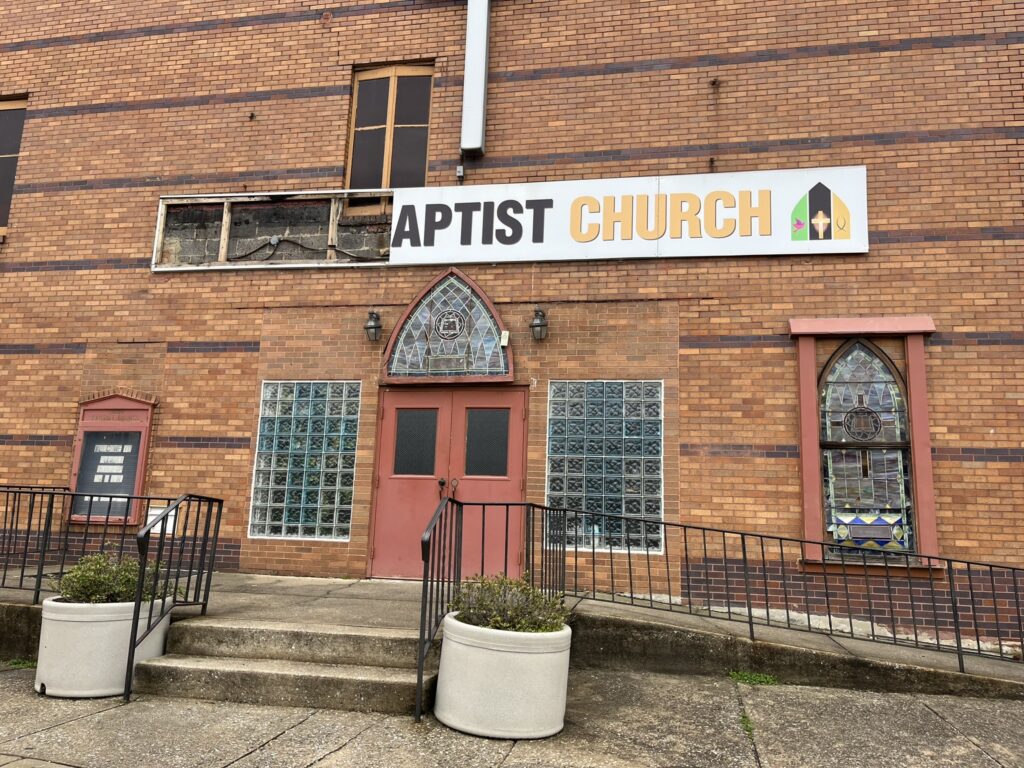DUNDALK, Maryland — The country held its breath as it watched the collapse of the Francis Scott Key Bridge in the wee hours of March 26th. The deaths of six construction workers marked a sadly memorable tragedy.
But along with the loss of life and the threat to businesses that relied on the bridge is the harm to one tiny Black community already struggling to survive.
Turner Station, a neighborhood in Dundalk, Maryland, that is 66 percent Black, exists in what was the shadow of the Key Bridge. There was a time when Turner Station was thriving, when Black people moved to town to work at Bethlehem Steel. Henrietta Lacks, the Black woman who became famous after her death because her cells helped create the HPV and polio vaccines, lived in Turner Station with her husband. They moved from Virginia so he could work at the Sparrows Point Shipyard. U.S. Rep. Kweisi Mfume, D-Md., represents the area and lived there as a child.
But today, there are less than 3,000 people left in Turner Station. Bethlehem Steel is gone. The neighborhood is plagued by flooding. Condos are encroaching. And now, the bridge has collapsed, creating more challenges for residents, who worry about transportation and also emergency response times. They feel neglected.
“It hurts to watch our history, our businesses, our community, and our culture be forgotten like this,” Turner Station resident Kira Clarke, 28, told Black News & Views.

The 47-year-old bridge tumbled into the Patapsco River after a cargo ship that lost power rammed into it. Since then, three temporary alternate channels have opened to help commerce continue. On Thursday, the body of a fifth construction worker was discovered while the body of the final worker remained missing. Gov. Wes Moore signed an executive order last month assigning $60 million in immediate economic relief for businesses and workers affected.
RELATED: Maryland Gov. Wes Moore outlines long road ahead for Key Bridge recovery
For communities like Turner Station, the key is getting the Port of Baltimore back open, Shailen Bhatt, administrator of the Federal Highway Administration, told Black News & Views in a telephone interview.
“Many communities in or around the port, such as Turner Station, rely heavily on port-related work for their livelihoods,” Bhatt said.
“There are efforts to set up aid through the state, and the state legislature is even exploring what they can do to help,” Bhatt added. “But the single best thing we can do is get that port back open.”
The port partially opened April 30 and full vessel transit is expected to happen by May 31.
In early April, Mfume introduced the Baltimore Bridge Relief Act to help pay for the replacement of the bridge.

Turner Station origins
Turner Station was once a spread of farmland owned by J.M. Turner, thus the name. In the 1880s, Pittsburgh Steel built a plant and the Sparrows Point Railroad Company built a station, which was the origin of the Turner Station name. Maryland Steel built worker housing and Turner Station flourished.
Development came at around 1920 in the time of the Great Migration of Black southerners to northern cities. The neighborhood evolved into one of the largest Black communities in Baltimore County. Around the time of World War II, Bethlehem Steel came to town and jobs were plentiful.
Eventually, there was a theater, a taxi company, a community laundry and a confectionary. The Adams Cocktail Lounge became the most popular place to gather in the Baltimore area, drawing artists like Billy Eckstein and Pearl Bailey.

But then, the bottom dropped out after the war. Jobs dried up. Between 1960 and 1970, the population was reduced by half, according to the Dundalk-Patapsco Neck Historical Society and Museum.
Longtime resident Mike Gwaltney remembers the old days.
“I remember when they built that bridge,” said Gwaltney, 72, who was 25-years-old in 1975, when construction on the Key Bridge started.
Gwaltney has lived in the same house since 1955, just across the street from the historic New Shiloh Baptist Church. He said he has seen Turner Station thrive as well as suffer.

“Before Gov. Moore, having a Republican governor during election season in a Democratic state didn’t go well for us,” Gwaltney said. “It contributed to our downfall.”
The trend continued, he said.
“I watched businesses in my community shut down, forcing people to seek work at the port or further into Dundalk and Baltimore City,” he added. “With the bridge collapsing, this trend is only going to worsen.”
Clarke, one of the younger residents, has watched the same decline.
“I grew up here, attending the same church since I was a little girl, Union Baptist Church,” Clarke said. “My grandparents took me every Sunday, ensuring I participated in Bible study and the youth group. Over the years, I’ve witnessed that church gradually break down.”

There is hope ahead
While thoughts of the future might be scary for residents of Turner Station, there is promise.
Gwaltney describes his community as one that digs deep to figure out how to persevere. For instance, he said, when there were conversations about building a nearby highway that would have restricted Turner Station geographically, the community protested.
“They gave us only one way in and out,” he said.
And Moore, Maryland’s first Black governor, appears committed to the area’s recovery.
“The Port of Baltimore is one of our state’s vital economic organs and the thousands of workers and businesses that depend on Port operations have been directly impacted by the Key Bridge collapse,” Moore said in a statement.
He added, “As we work as quickly – and as safely – as possible to clear the debris and open the commercial shipping channels, we are working in partnership with our partners at the local and federal levels of government, private sector, nonprofit sector, and philanthropic sector to respond to this economic crisis with the urgency that it deserves.”
Zakaiya Williams is a journalism student at Morgan State University, an HBCU in Baltimore. Upon completing the reporting for this project, she said, “Let us apply the knowledge gained from Turner Station to our future endeavors and make a commitment to ensuring that no town is overlooked or forgotten.”








